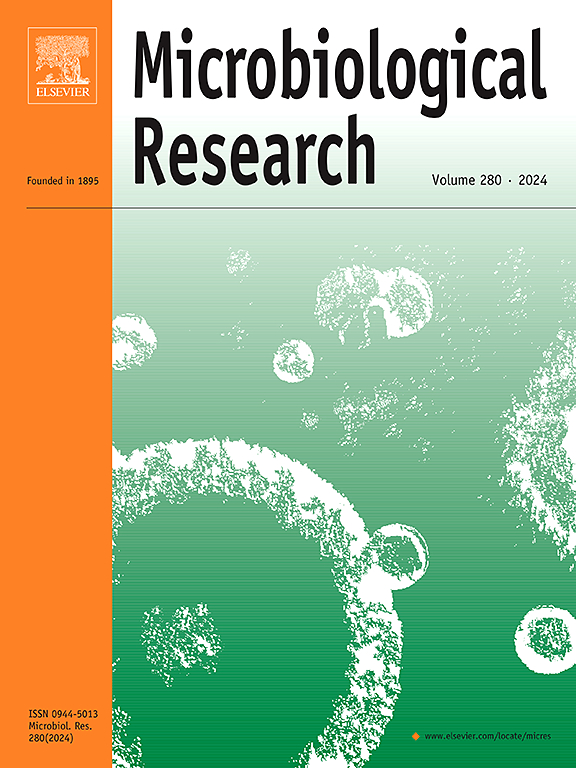Transcriptomics reveals the regulation of the immune system of the mushroom-forming fungus Schizophyllum commune during interaction with four competitors
IF 6.1
1区 生物学
Q1 MICROBIOLOGY
引用次数: 0
Abstract
Mushroom-forming fungi frequently encounter competitors during their lifecycle, but their defense mechanisms remain largely unexplored. We studied the response of the mushroom-forming fungus Schizophyllum commune during interaction with the fungal competitors Trichoderma harzianum, Trichoderma aggressivum and Purpureocillium lilacinum and the bacterial competitor Serratia quinivorans. Transcriptomics revealed 632 up-regulated genes in the direct interaction zone, which were enriched in small secreted proteins and transporters. A set of 26 genes were up-regulated during all interactions, indicating a core transcriptomic defense response. In the non-interacting edge of the mycelium of S. commune, there were 154 up-regulated genes, suggesting that there is a systemic response due to a signal that reaches unaffected areas. The GATA zinc finger transcription factor gene gat1 was up-regulated during interaction and a Δgat1 strain displayed increased colonization by T. harzianum. Previously linked to mushroom development, this transcription factor apparently has a dual role. Moreover, 138 genes were up-regulated during both interaction and mushroom development, indicating priming of the defense response during development to prepare the fruiting body for future interactions. Overall, we unveiled a defensive response of S. commune during interaction with fungal and bacterial competitors and identified a regulator of this response.
转录组学揭示了形成蘑菇的真菌五味子在与四种竞争者相互作用过程中对免疫系统的调控
蘑菇真菌在其生命周期中经常会遇到竞争者,但它们的防御机制在很大程度上仍未得到探索。我们研究了形成蘑菇的真菌牛肝菌在与真菌竞争者哈茨真菌(Trichoderma harzianum)、侵袭性毛霉(Trichoderma aggressivum)、紫色毛霉(Purpureocillium lilacinum)以及细菌竞争者奎尼沃氏沙雷氏菌(Serratia quinivorans)相互作用过程中的反应。转录组学发现,在直接相互作用区有 632 个上调基因,其中富含小型分泌蛋白和转运体。一组 26 个基因在所有相互作用过程中都被上调,表明存在核心转录组防御反应。在 S. commune 菌丝体的非交互作用边缘,有 154 个基因上调,表明由于信号到达未受影响的区域而产生了系统反应。在相互作用过程中,GATA 锌指转录因子基因 gat1 被上调,Δgat1 菌株被 T. harzianum 定殖的数量增加。这种转录因子以前与蘑菇的发育有关,显然具有双重作用。此外,138 个基因在交互作用和蘑菇发育过程中均上调,这表明防御反应在发育过程中启动,为子实体未来的交互作用做好准备。总之,我们揭示了牛肝菌在与真菌和细菌竞争者相互作用期间的防御反应,并确定了这种反应的调节因子。
本文章由计算机程序翻译,如有差异,请以英文原文为准。
求助全文
约1分钟内获得全文
求助全文
来源期刊

Microbiological research
生物-微生物学
CiteScore
10.90
自引率
6.00%
发文量
249
审稿时长
29 days
期刊介绍:
Microbiological Research is devoted to publishing reports on prokaryotic and eukaryotic microorganisms such as yeasts, fungi, bacteria, archaea, and protozoa. Research on interactions between pathogenic microorganisms and their environment or hosts are also covered.
 求助内容:
求助内容: 应助结果提醒方式:
应助结果提醒方式:


